
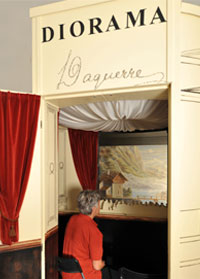 (1) 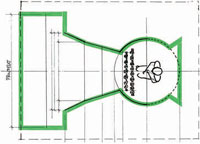 (2) 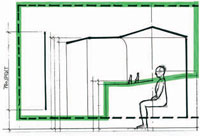 (3) 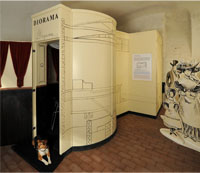 (4) 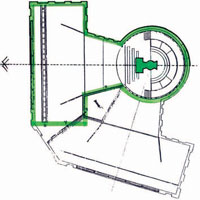 (5) 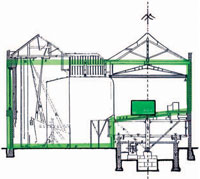 (6) |
The model (1) built at a scale of 1:8 (green, within highlighted green original shape) is big enough to give an idea of what the Diorama theatre could have been. To sit in the model and have an almost similar vision as the public of the period is the key experience for understanding Daguerre’s art and professionalism as well as the impact his invention had at the beginning of the 19th century (2/3). The public became part of the scenery. The way the viewing channel was constructed and the fact that the public was sitting in the dark, made the subject appear real and without an actual margin. Lighting that changed between the front and the rear of the canvas caused a slow transformation of the scenery and created the illusion of movement (pseudoanimation) without any cinema technology. It is said that some sensible ladies fainted because of the overwhelming impression. The slow motion experience of the Diorama confronts today’s zapping public with a very different visual habit. The goal was to build a scale model of a Daguerre Diorama which would be as similar to the original and with as little compromise to the needs of an exhibition as possible. The model is made of more than 60 pieces. It represents the rotunda and one viewing channel (4), whereas in the original there were two or three such channels (5/6). Two spectators can sit in the model at the same time and merge with the model size public in front of them, figurines on simple benches representing those who might not have been able to afford the better seats further back in the rotunda or a visit to the sites shown in the Diorama. |